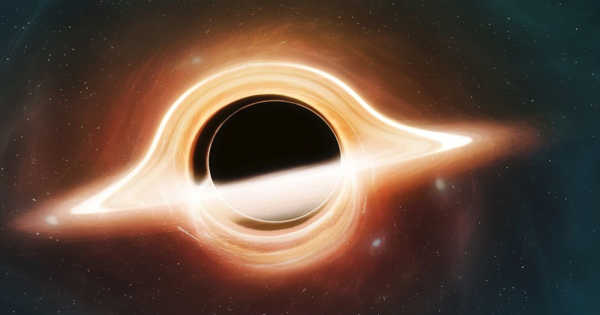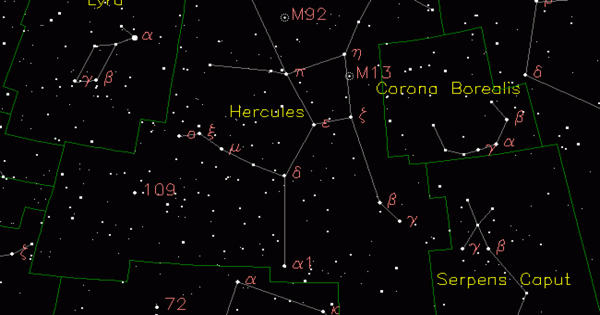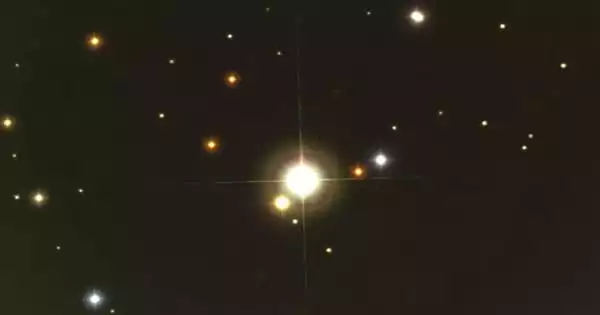Stanford University astrophysicist Dan Wilkins noticed an intriguing pattern while watching X-rays emitted by the supermassive black hole at the center of a galaxy 800 million light-years away. He observed a series of bright X-ray flares – exciting, but not unprecedented – and then the telescopes recorded something unexpected: smaller, later, and different “colors” than the bright flares.
These luminous echoes were consistent with X-rays reflected from behind the black hole, according to theory, but even a basic understanding of black holes tells us that is an unusual place for light to come from.
“Any light that goes into that black hole doesn’t come out, so we shouldn’t be able to see anything behind the black hole,” Wilkins, a research scientist at Stanford’s Kavli Institute for Particle Astrophysics and Cosmology and the SLAC National Accelerator Laboratory, explained. However, it is another peculiar feature of the black hole that allows for this observation. “That’s because the black hole is warping space, bending light, and twisting magnetic fields around itself,” Wilkins explained.
Fulfilling a prediction of Einstein’s theory of General Relativity, researchers report the first-ever recordings of X-ray emissions from the far side of a black hole.
The strange discovery, detailed in a Nature paper, is the first direct observation of light from behind a black hole – a scenario predicted by Einstein’s theory of general relativity but never confirmed until now.
“Fifty years ago, when astrophysicists began speculating about how the magnetic field might behave close to a black hole, they had no idea that one day we might have the techniques to directly observe this and see Einstein’s general theory of relativity in action,” said Roger Blandford, a co-author of the paper and the Luke Blossom Professor in the School of Humanities and Sciences.
How to see a black hole
The original goal of this study was to learn more about a mysterious feature of certain black holes known as the corona. Material falling into supermassive black hole power the universe’s brightest continuous sources of light, forming a corona around the black hole in the process. This light, which is actually an X-ray light, can be used to map and characterize a black hole.
The leading theory for what a corona is begins with gas falling into a black hole and superheating to millions of degrees. Electrons separate from atoms at that temperature, resulting in a magnetized plasma. Caught up in the black hole’s powerful spin, the magnetic field arcs so high above it and twirls so much that it eventually breaks – a situation so similar to what happens around our own Sun that it was given the name “corona.”

“When this magnetic field becomes entangled and then snaps close to the black hole, it heats everything around it and produces these high energy electrons, which then go on to produce the X-rays,” Wilkins explained.
Wilkins noticed a series of smaller flashes as he investigated the source of the flares. These, the researchers discovered, are the same X-ray flares but reflected from the back of the disk – the first glimpse of a black hole’s far side.
“For a few years, I’ve been developing theoretical predictions of how these echoes appear to us,” Wilkins explained. “I’d already seen them in my theory, so once I saw them in the telescope observations, I could figure out the connection.”
Future observations
The mission to characterize and understand coronas is ongoing and will necessitate additional observations. Athena, the European Space Agency’s X-ray observatory, will be a part of that future (Advanced Telescope for High-ENergy Astrophysics). Wilkins is a member of Steve Allen’s lab, which is professor of physics at Stanford and particle physics and astrophysics at SLAC. He is helping to develop a component of the Wide Field Imager detector for Athena.
“It has a much larger mirror than we’ve ever had on an X-ray telescope, and it will allow us to get higher resolution images in much shorter observation times,” Wilkins said. “So, with these new observatories, the picture we’re starting to get from the data will become much clearer.”
This study’s co-authors come from Saint Mary’s University in Canada, the Netherlands Institute for Space Research (SRON), the University of Amsterdam, and The Pennsylvania State University. The NASA NuSTAR and XMM-Newton Guest Observer programs, a Kavli Fellowship at Stanford University, and the V.M. Willaman Endowment at Pennsylvania State University all provided funding for this research.
















